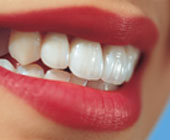PAIN FREE Cosmetic Dentist in Malaysia
Welcome to BrightSmile Dental, Malaysia
How to Remove Mercury Amalgam (Silver) Dental Fillings
Our protocol when removing mercury amalgam fillings is based on that of the
International Academy of Oral Medicine and Toxicology (IAOMT) and
our patients feed back over the years.
Even though some of IAOMT's recommended procedures may vary from dentist to dentist we feel it's important for you to be aware of this protocol because it was designed to minimize your exposure to mercury vapor and particles.
We strictly adhere to these 7 PROTOCOLS :
Patient protection:
First in every concerned doctor's mind is the protection of the patient from additional exposure to mercury. This is especially true of the mercury toxic patient. The mercury toxic patient may have been exposed to varying amounts of mercury from diet, environment, employment or from mercury/silver dental fillings. All forms are cumulative and can contribute to the body burden.
The goal of this preferred procedure is to minimize any additional exposure of the patient, ourselves, or staff to mercury.
During chewing the patient is exposed to intraoral levels which are several times the EPA allowable air concentration.
[2] During the removal or placement of amalgam the patient can be exposed to amounts which are a thousand times greater than the EPA allowable concentration.
[3] Once the drill touches the filling temperature increases immediately vaporizing the mercury component of the alloy. There are 8 steps to greatly reducing everyone's exposure.
Safe Amalgam Filling Removal: Guidelines for Patients Info :
1. Keep the fillings cool during removal . Drilling out an amalgam filling generates a tremendous amount of heat, which causes a dramatic increase in the release of mercury, both as a vapor and in amalgam particles, during the entire removal process. Cooling the filling with water and air while drilling dramatically reduces the amount of mercury vapor the filling releases. Most mercury free dentists use a removal process that's commonly referred to as chunking . This involves less drilling, because the dentist only drills enough to cut the filling into chunks, which can then be easily removed by a hand instrument or suction.
2. Use a high-volume evacuator. Most mercury free dentists use a more powerful suction system than those used by most pro-amalgam dentists. We feel this is one of the most important tools in minimizing the patient's exposure to mercury vapor and amalgam particles. The evacuator tip should always be kept to within 1/2 inch of the filling during the entire time the filling is being removed. This helps capture more of the mercury vapor and particles.
3. Immediately dispose of filling particles . While a dentist working alone can safely remove mercury amalgam fillings, it is easier for everyone to have an assistant working with him throughout the removal procedure. This will ensure constant suction and a continuous flow of air and water.
4. Remove gloves and clean the patient's mouth. Once the amalgam filling(s) have been safely removed and replaced, the dentist and the assistant should remove and dispose of their gloves , and thoroughly rinse and vacuum the patient's entire mouth for at least 15 seconds. The patient should make every effort not to swallow during this procedure. We also suggest that after the rinsing procedure, the patient use a small amount of water and gargle as far back into her throat as possible. The patient should not swallow this watery residue! Instead, he should spit it into a sink or cup.
5. Immediately clean up. After the fillings have been removed and replaced, the dentist or dental assistant should immediately remove and dispose of the patient's protective covering and thoroughly clean her face and neck.
6. Keep room air as pure as possible. There are a number of effective ways to purify the air in the office.But most mercury free dental offices filter the office air, as they work in it all day and it's to their benefit to do so. This is more important for the dentist and staff than for the patient. Although mercury free offices don't place amalgam fillings, they certainly are required to remove them. Removing the fillings releases significant amounts of mercury vapor, and any mercury free dentist would want to take the necessary precautions to protect the entire staff from excessive exposure to mercury.
7. Use activated charcoal. There's some evidence that activated charcoal taken 10-15 minutes before amalgam removal can bind smaller particles of swallowed mercury, allowing them to be harmlessly passed out of the intestine via the feces.
Note : We recommend that anyone who has mercury related symptoms or diseases related to chronic mercury poisoning, allergies, or immune system dysfunction, have their amalgam fillings removed in a safe way.
REFERENCES
1 IAOMT Standards of Care Preferred Procedure Approved 9/27/92
2 EPA United States Environmental Protection Agency Office of Health and Environment Assessment Mercury health effects update Final Report EPA-600/8-84-019F 1971 EPA
3 Cooley RL, Barkmeier WW: Mercury vapor emitted during ultraspeed cutting of amalgam. J Indiana Dent Assoc 57:28-31, 1978
4 OSHA Job Health Series: Mercury.(2234)8/1975
5 Hazard Communication Program Federal Register/ Vol. 52. No. 163 / Monday, August 24, 1987
6 OSHA MAC is Threshold Limit Value of 100 micrograms/ cubic meter or 100 PPM This is a never to be exceeded standard.
7 Koos BJ and Lango LD , Mercury Toxicity in the pregnant woman, fetus, and newborn infant. A review Am J Obstetrics and Gynecology 126(3):390-409, 1976
8 Mine Safety Association high levels and 3M mercury dust mask lower levels

